 A March survey of U.S. restaurant guests had some revealing findings. Revenue Management Solutions, which surveyed 800 restaurant guests about their dining habits, found that higher-income households and families with children were driving decreases in traffic across all restaurant segments. The share of higher-income households (those earning more than $99,000 annually) that reported spending more of their disposable income on restaurants dropped significantly – 73 percent in the fourth quarter of 2022 as compared to 37 percent in the first quarter of this year. A Modern Restaurant Management report about the survey points to inflation being the likely cause of the change – and it’s also generating a shift in habits, with more guests willing to collect restaurant food in person than pay extra for delivery. If this is your experience, consider it an opportunity to elevate your in-person marketing efforts. How can you bring your brand front of mind for guests in ways not available to you if you were sending the same order through a third-party delivery company? Could you provide special last-minute offers to those collecting their meals? Extra loyalty points? Suggest additional items to complement an order? Then consider how smooth you make the collection process, whether through lower-tech means like easy curbside pickup or dedicated parking, or higher-tech means like geofencing to ensure a person’s order is hot and ready to go as soon as they arrive.  At the time of this writing, grocery inflation was still outpacing menu prices, but it was in decline. Consumer Price Index data released by the Bureau of Labor Statistics in February indicated that food-at-home prices increased at an annual rate of 11.3 percent in January, down from 11.8 percent the previous month. Comparatively, prices for food away from home climbed 8.2 percent for the same time period. This pricing gap is, at the moment, giving consumers a nudge to buy restaurant meals. Restaurants may have an opportunity right now to entice guests with limited-time offers that stand out and even push beyond what guests expect from a brand. This can work especially well if you have a new item or service model you’re testing that needs to make a splash and generate some attention. Take Shake Shack, which recently unveiled its $20 Truffle Table experience, a limited-time offer designed around its new truffle-related menu items. It includes a table for two with a white tablecloth, fine china, wine, a milkshake of the guests’ choice, and a selection of truffle-themed menu items. It’s not what guests would expect from Shake Shack – with the possible exception of the milkshake – but it generates interest, feels like a novelty experience, and therefore elevates the offer into something more memorable and special than something prepared at home.  It may seem like the world has moved beyond Covid-19, but the virus continues to make the restaurant landscape feel different than it once did. Where, when and how people consume food from restaurants has changed. The numbers prove it: As a recent Washington Post report indicates, restaurants are serving 16 percent fewer people in their dining rooms as compared to before the pandemic. Meanwhile, off-premises dining has picked up the slack. While carry-out business is down 3 percent, delivery is up more than 5 percent and drive-through business is up 13 percent. The National Restaurant Association’s Hudson Riehle says a commanding 39 percent of all restaurant traffic is coming through the drive-through lane. This has divided restaurants into a couple of categories – those that provide fast, convenient, quality service for people on the go, and others that focus more on providing a memorable dining experience that’s worth lingering over. If you’re among the large and growing number of restaurants in the first category, consider how you might iron out any kinks in your mobile ordering, pickup and delivery processes. If you don’t provide drive-through service, how can you incentivize people to collect carry-out from you? Could your technology empower your staff to track orders with greater precision and bring them out promptly to waiting guests? Consider how you might infuse your service model with some flexibility and show guests that dining with you – whether off-premises or on – is a convenient and worthwhile option for them in this new environment. 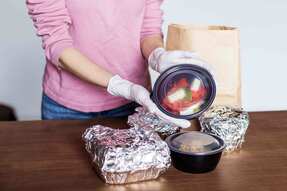 The prospect of a looming recession, along with rising prices on everything from food to fuel, have started to impact how consumers spend – and what budget items they feel they need to adjust to live within their means. While this means people are restricting their spending when it comes to buying takeout food, meals away from home, and travels to far-flung destinations, it also means they are looking to have memorable experiences with friends and family a bit closer to home this year. That’s where there is opportunity for restaurants to fill the gap. Take some cues from Hauste, a new company inspired by meal delivery boxes and motivated by the pandemic-era desire to bring restaurant meals home. As reported by Eater, Hauste develops downloadable dinner party guides – priced at $16 or $26 depending on the size of the gathering – that include a shopping list, menu, recipes, music playlist, design inspiration, checklists, and in some cases, templates for name cards or invitations. What’s more, the guides help the host get organized by breaking tasks down into the days and minutes leading up to an event. If you are a restaurant that prides itself on the in-person experience offered to guests, how can you repackage it as the “staycation” version of that experience? By making it easier for your customers to host a polished, low-stress gathering, you’re also creating opportunities for them to promote you on social media. Socializing and entertainment are still happening right now – and consumers are eager to connect. How can you find new ways to help them gather and celebrate in ways that feel like a great value and can therefore find a place in their budget? 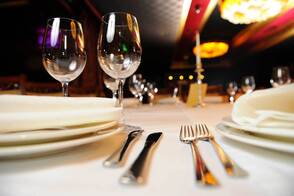 Inflation is a worry for nine out of 10 adults, according to a survey taken recently by the online research firm Momentive for The New York Times. As guests scrutinize more of their expenses, discretionary restaurant spending is a natural place for them to cut back. But on the plus side, demand persists for restaurant food – it may just look different for a while. As John Church, co-head of HSBC Bank’s food and beverage unit, told The Food Institute, “Consumers are likely to trade down during inflationary times as they will want to continue to enjoy some level of out-of-home dining experience.” Restaurant operators may just have to double down on strategies to get guests in the door. Right now, focusing on providing value can help. Offer combo meals that emphasize cost savings – like a family meal deal that may even provide some leftovers for lunch the next day. Create a sense of urgency with guests by creating a rolling line-up of limited-time offers. Give people a reason to return by asking them if they want to receive special offers, then following up with deals related to foods they have enjoyed from you in the past. Take a page from your pandemic playbook and package up an experience – a cooking class or wine tasting, for example – that makes restaurant food or drink feel like a worthwhile outing or a go-to choice for someone looking to give a special gift. When you offer those experiences, talk them up on social media to inspire guests looking for memorable ways to gather with friends and family. 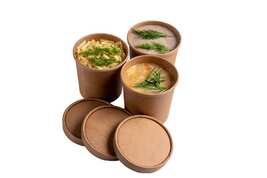 Your off-premise business no doubt looks a lot different than it did just a couple of years ago. According to research from NPD Group, off-premise restaurant orders were up 20 percent in September compared to where they were in 2019. But what happens when you’re not only struggling to source key ingredients but also the cups and containers you need to enable your food to get out the door? Ongoing global supply chain challenges have resulted in increased costs and scarcity of these items, with key suppliers having to limit the number of cases restaurant customers can purchase from them. Some major brands are finding alternatives that have fringe benefits. Sara Burnett, who leads sustainability efforts for Panera Bread, told CNBC that the brand had switched to a compostable thermal wrap for their sandwiches – and it happens to use 60 percent less material, is easier to transport and has a smaller carbon footprint. But as the pandemic ebbs, there may be less consumer concern about the need for single-use items – and perhaps an opportunity for restaurant brands to revive the pre-pandemic programs they had in place for reusable containers. As Nation’s Restaurant News reported recently, Tupperware has created reusable packaging for Tim Hortons as part of the brands’ partnership with the zero-waste platform Loop. 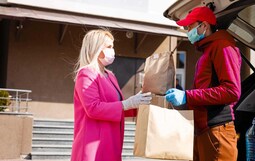 Even before the pandemic, the shift from on-premise to off-premise dining was happening. But the pandemic truly accelerated it, and even as people return to restaurant dining rooms now, there is still a way to go before things look the way they did a couple of years ago. To be sure, the trend is especially stark for full-service restaurants – new data from FSR Magazine indicates that in September of 2019, 80 percent of traffic at full-service restaurants was on-premise (compared to 20 percent for carryout), whereas the mix in September of 2021 was 56 percent on-premise, 44 percent carryout. Still, across restaurant categories, an operator needs to make a clear-eyed assessment of their business model in light of current market conditions, then take steps to protect the business for the long term. That means expanding, not limiting, opportunities to serve guests – and resisting the urge to revert back to how you were operating pre-pandemic. Consider new opportunities for catering, particularly as businesses are looking for ways to maintain connections between hybrid workers and clients. Keep communication open with neighboring restaurants and complementary businesses that may be able to pool resources, share staff, or collaborate with you on promotions. Think about how to make it easier and faster for your food to reach guests who want to eat it off-premise, whether that means assessing third-party delivery providers to find the best-possible arrangement, starting an in-house delivery service or using a ghost kitchen.  As much as we all hoped and expected this summer would represent a return to pre-pandemic gathering and eating out, the delta variant has had other plans in store for many parts of the country. Restaurant operators, again, have been put in the challenging position of having to be enforcers of ever-fluctuating state and local regulations – all while continuing to juggle ongoing labor and supply shortages. If you haven’t already, it’s a good time to take a look back at your early-pandemic playbook and identify income streams that might help you weather the current challenges. That could mean posting new products for sale on your website, offering cocktails to-go if allowed in your state, and promoting family-style meal packages for guests who crave your food but aren’t yet comfortable eating out. Consider how your restaurant might adapt to the current situation of local consumers – whether that be a continuation of working from home or the beginning of hybrid work. Try to create stability, wherever possible, for both guests and staff. That could involve sticking with delivery and takeout service only (at least for the time being) or operating on a limited but set schedule. While it may feel like you’re missing opportunities to generate sales, guests and employees alike are likely to value predictability. Your loyalty program may help you here too. Do you want to boost visits on particular days and times? Increase your carry-out business while dine-in business is uncertain? Consider how you can incentivize your most loyal guests to help you keep business humming. 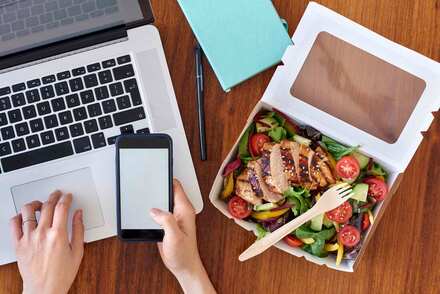 As the pandemic continues, hybrid work arrangements look like they may be here to stay for many – if not most – companies around the country. Global research indicates that 72 percent of corporate leaders plan to offer hybrid models of working. How might your restaurant meet the moment? If your dine-in business lunch traffic continues to be low, could your business find a new way to attract the guests who used to come to you? Panera, for one, has been acting on a new strategy aimed specifically at remote workers. They are offering scheduled group ordering, as well as catering for companies with workers in different places. At a time when companies are trying to navigate how to maintain camaraderie across employee teams that may only see each other for a few days each week in satellite offices, offering a regularly scheduled catered lunch might be an appealing way to make the most of the time employees spend face to face. Or, you could target the large population of consumers working from home. The World Economic Forum said recently that up to 20 percent of the U.S. entire workforce will continue to work from home permanently, up from 5 percent pre-pandemic. If you’re located in an area with condominium complexes where people are apt to be continuing to work from home, offering a scheduled building-wide delivery might enable you to attract lunchtime traffic – even if it’s not in your dining room 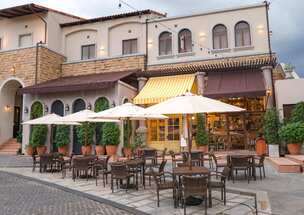 Seemingly all restaurant operators have had to adjust how they operate during the course of the pandemic, whether by enabling curbside pickup, designing delivery-friendly menus, redesigning a strip of sidewalk to accommodate tables in any weather, or otherwise. But even as we ease back into more normal conditions, it will likely benefit you to retain many of the changes you have made. For one, make your outdoor dining areas usable year-round with the help of solid structures, sturdy weather-resistant canopies, heat lamps and even those dining bubbles used widely last winter. This is simply about scrutinizing your entire real estate footprint so you are making money from each square foot. Along those lines, try flexing your space to better accommodate carryout and delivery orders during lunch, or offering promotions to remote workers looking for a temporary workspace or snack break during your quiet periods. Your takeout menu is another area that needs to hold strong with foods that travel well, coordinated cocktails and special touches like notes or candies included in the bag. Continue to seek out technology that will help you streamline ordering and payment, minimize lines and turn tables faster. Finally, maintain your efforts to show your commitment to cleanliness. Hand sanitizers should be ready for guests as they walk in your doors – and asking guests to sanitize their hands before they sit can help you show them you care about safety. |
Subscribe to our newsletterArchives
June 2024
Categories
All
|

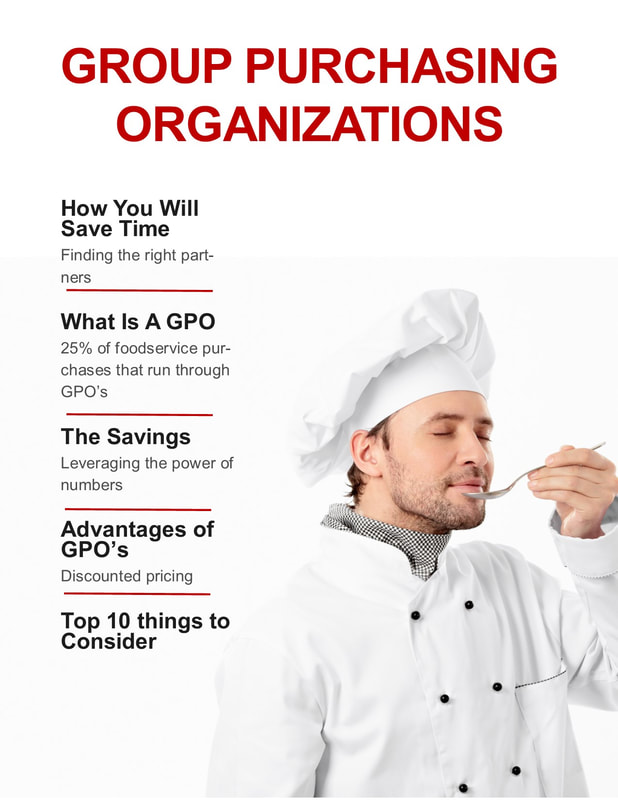

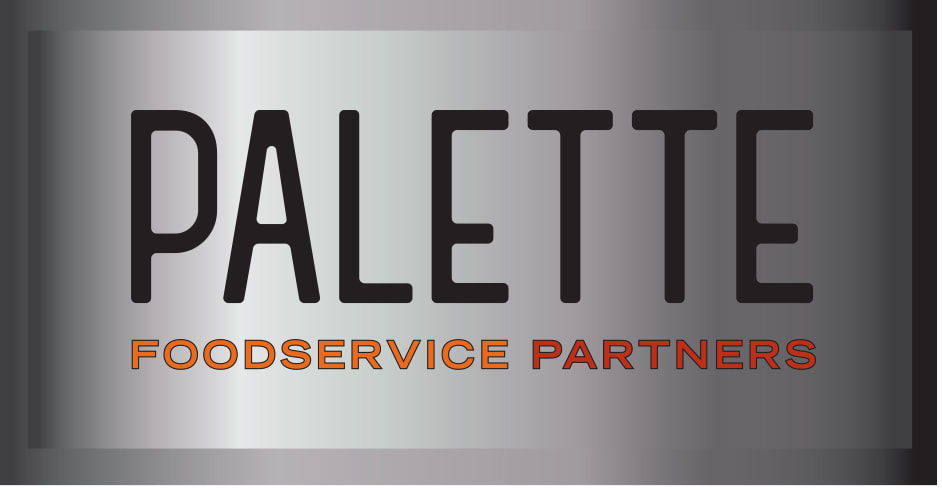
 RSS Feed
RSS Feed